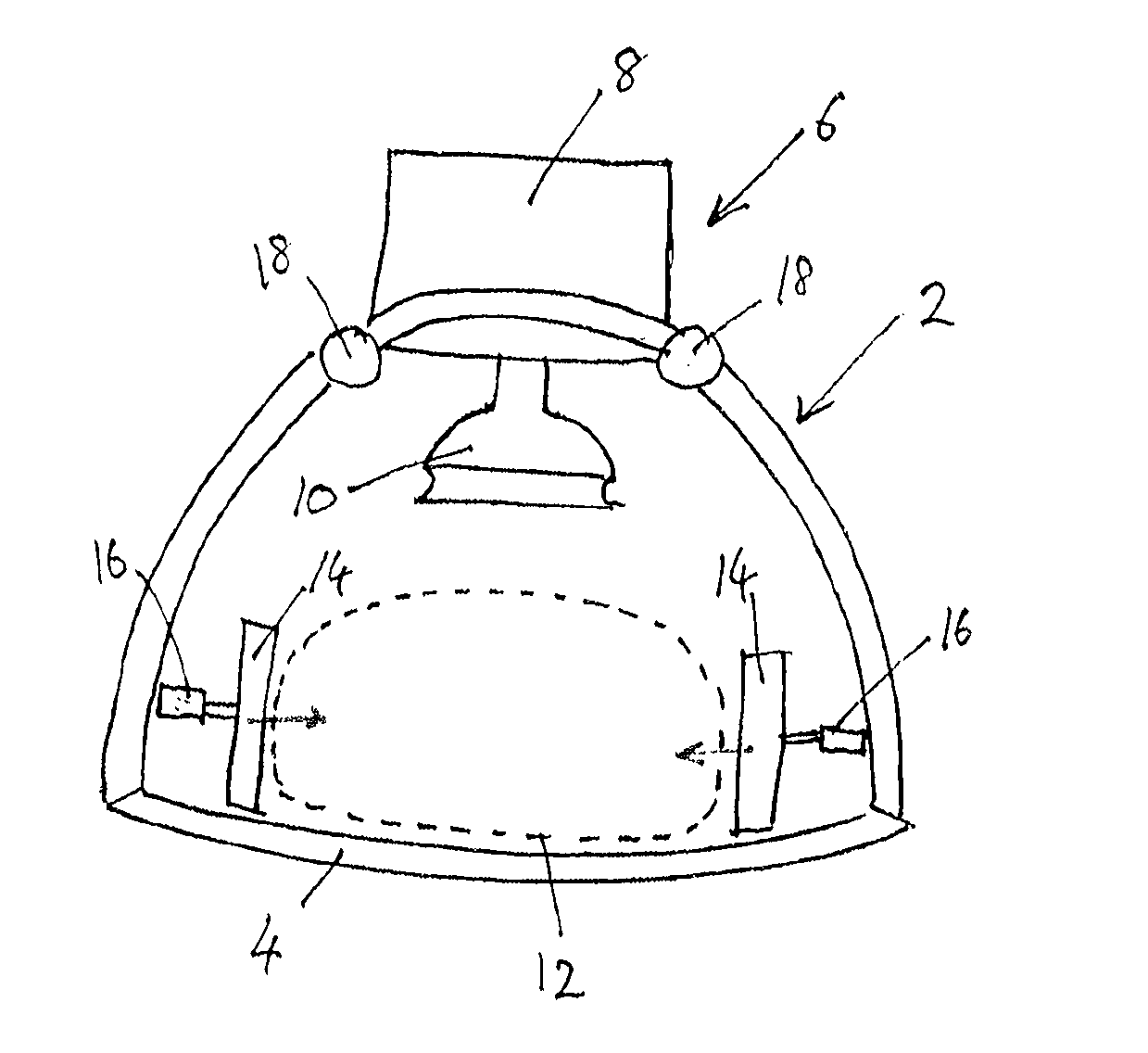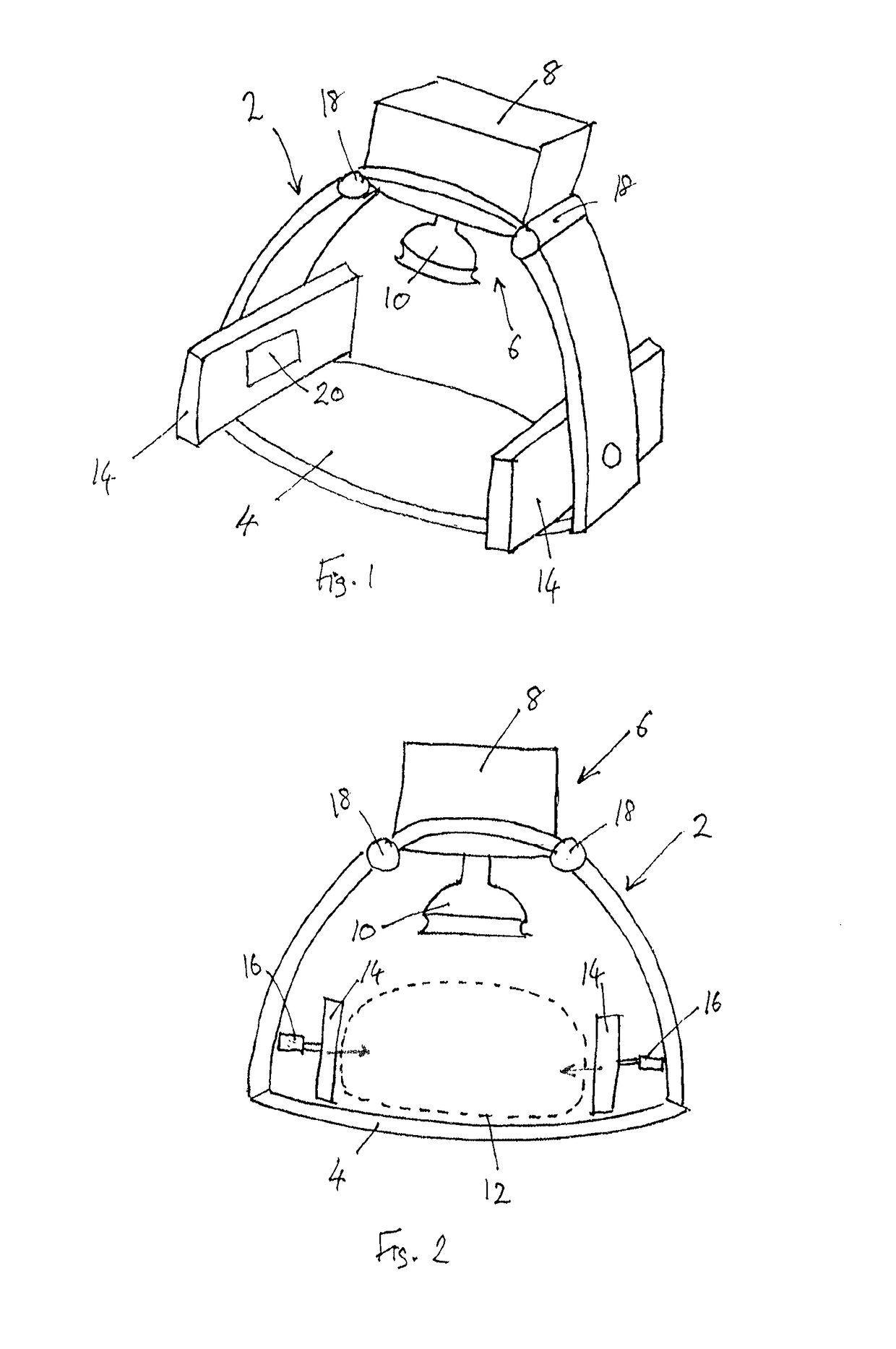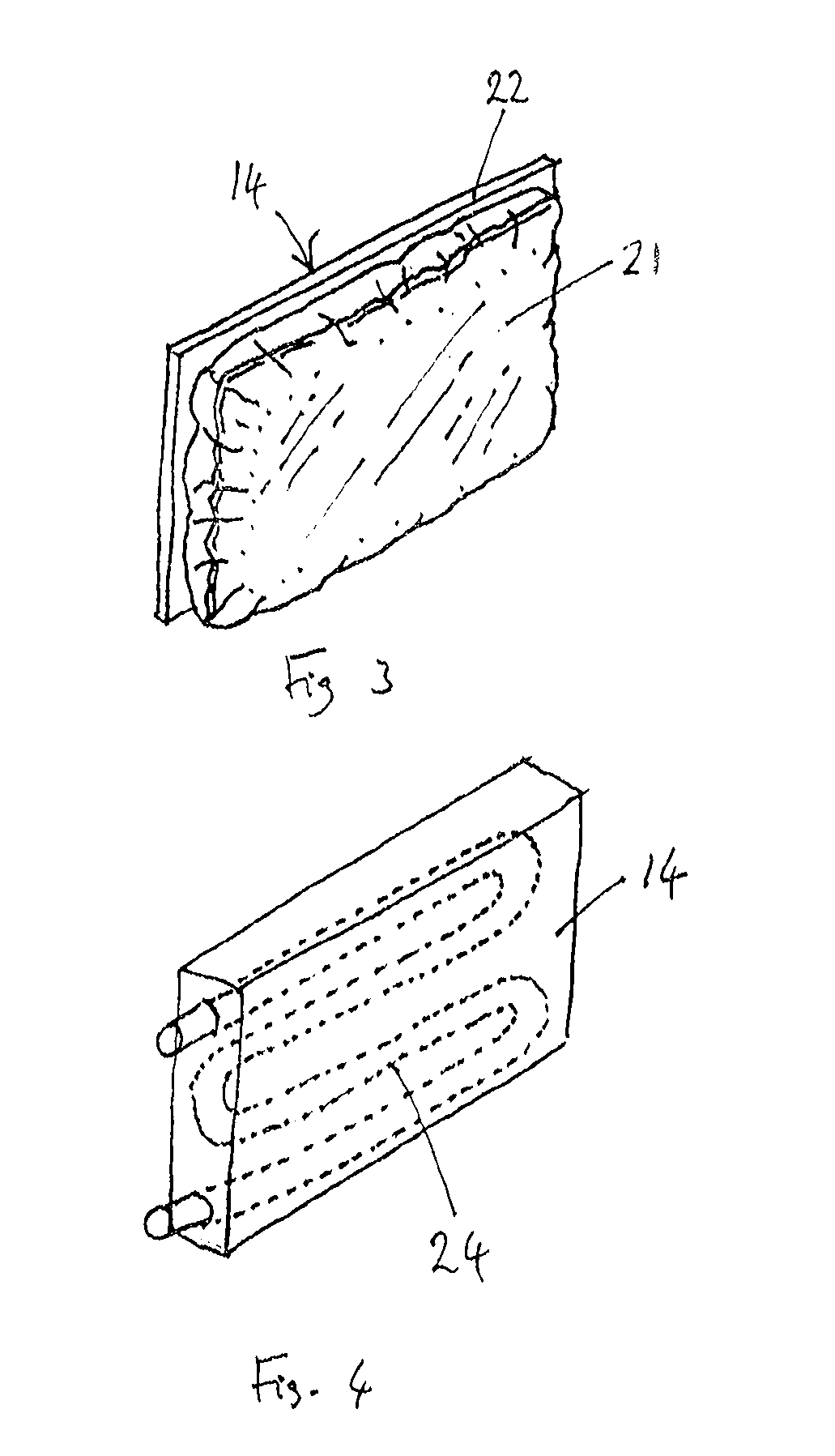Chest compression device
a compression device and chest technology, applied in the direction of heart defibrillators, supine patient support/support, heart stimulation, etc., can solve the problems of high quality manual compression, dangerous for medical personnel, and the inability to achieve clear improvement in patient survival with a devi
- Summary
- Abstract
- Description
- Claims
- Application Information
AI Technical Summary
Benefits of technology
Problems solved by technology
Method used
Image
Examples
Embodiment Construction
[0033]The main features of the chest compression device, including the piston arrangement for compressing the chest, can be similar to those found in known products such as the LUCAS™ Chest Compression System manufactured and developed by Joffe AB / Physio-Control of Sweden. Thus, as shown in FIGS. 1 and 2 one preferred embodiment of the device comprises a support structure in the form of an arch 2 over a back plate 4 and supporting a piston device 6, which is to be positioned over the patient's sternum. The patient hence lies on their back with the back plate 4 beneath them and the arch 2 holds the piston device 6 above the chest. The piston device 6 includes an actuator and controller 8 along with a piston 10 that is arranged to compress the chest when driven toward the chest by the actuator. FIG. 2 includes an indication of the positioning of the chest within the chest compression device and shows a schematic cross-section of the torso 12.
[0034]The device is further provided with l...
PUM
 Login to View More
Login to View More Abstract
Description
Claims
Application Information
 Login to View More
Login to View More - R&D
- Intellectual Property
- Life Sciences
- Materials
- Tech Scout
- Unparalleled Data Quality
- Higher Quality Content
- 60% Fewer Hallucinations
Browse by: Latest US Patents, China's latest patents, Technical Efficacy Thesaurus, Application Domain, Technology Topic, Popular Technical Reports.
© 2025 PatSnap. All rights reserved.Legal|Privacy policy|Modern Slavery Act Transparency Statement|Sitemap|About US| Contact US: help@patsnap.com



